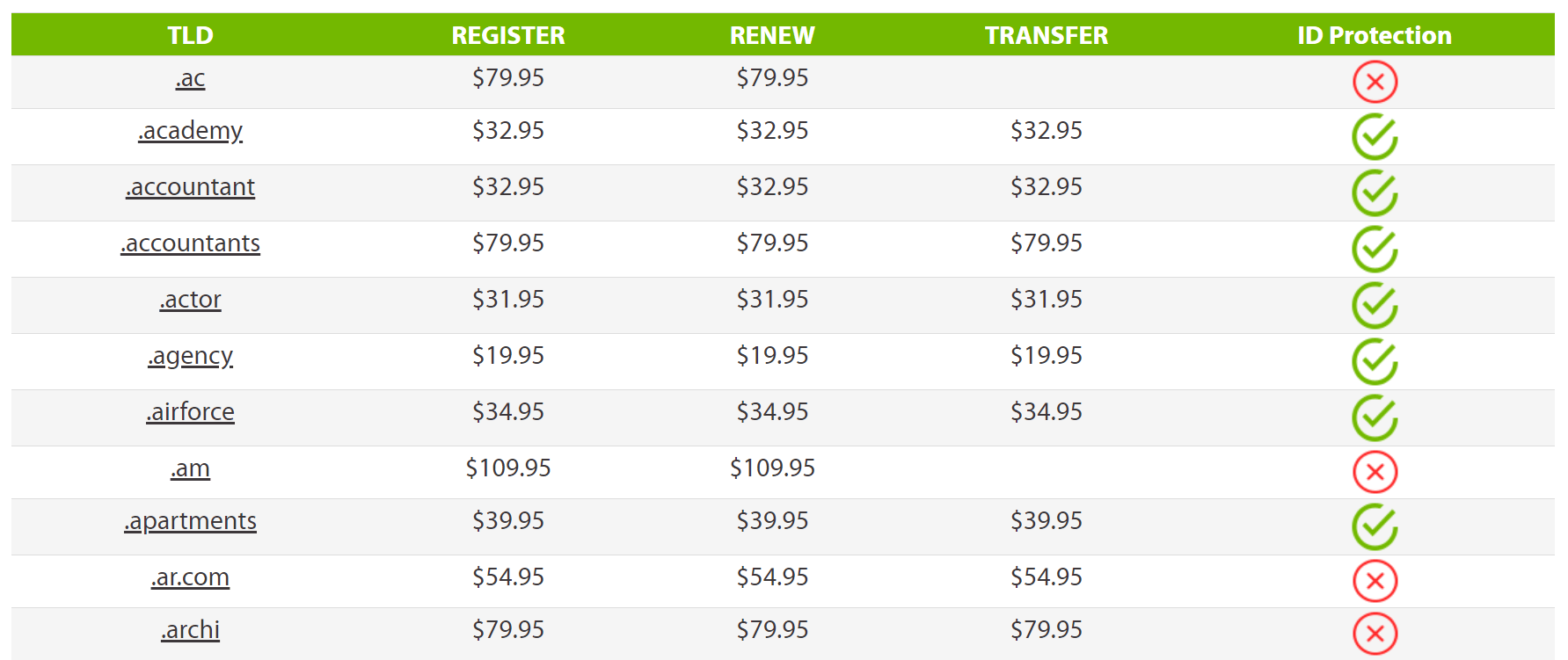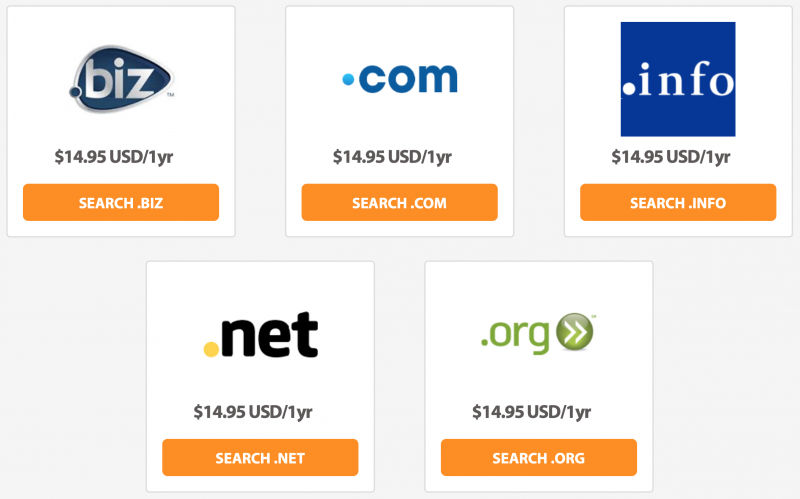- Feb 25, 2019
 0
0- by A2 Marketing Team
Your domain name is a reflection of your business, so it needs to give customers an idea of what you have to offer. For this reason, choosing a domain for your website is one of the harder decisions you’ll make. Not only do you need to pick a name, you’ll also have to select which Top Level Domain (TLD) to use.
A TLD is the extension at the end of your site’s primary URL. Many websites tend to use .com or .org, and other common extensions. However, over the past few years an entire group of newer TLDs have become popular. Deciding which one is right for you depends on the individual needs of your site.
In this post, we’ll explore the new TLDs, and explain how they differ from the standard options. We’ll also talk you through the potential pros and cons of using a new TLD over a more traditional choice. Let’s jump right in!
A Brief Introduction to TLDs (And Why They Matter)
When choosing a domain name for your site, your focus will be probably be drawn to the middle section. In other words, you’ll likely spend a lot of time thinking about the “mysite” part of https://mysite.com.
This is where many people will include their company or brand name, although you can be creative as you’d like. Fortunately, there are plenty of tools that can help you narrow in on the perfect name for your site. Of course, the decisions don’t stop there. You’ll also need to choose a TLD (or extension) – the .com in https://mysite.com.
Perhaps unsurprisingly, .com is the most popular TLD. Short for “commercial”, this extension is frequently used by businesses, but also by websites of all types. You’ll also see many sites using .org (organization) and .net (network). However, there are a number of other options out there.
For example, there are industry-specific TLDs, such as .edu (education) or .gov (government). You’ve also probably encountered country-code TLDs – such as .co.uk. These are related to a specific geographical location, although they can sometimes be used worldwide.
While these are some of the most popular choices, there are a lot more TLDs than you might expect. Let’s talk about some domain extensions you may not have previously encountered.
Understanding the New TLDs
Not long ago, there wasn’t much variety when it came to what TLDs were available. However, this all changed when the International Corporation for Assigned Names and Numbers (ICANN) launched its New Generic Top Level Domain (gTLD) program.
This program was designed to increase the number of TLD options, and asked internet users to submit applications for new additions. ICANN ultimately received 1,930 suggestions before the set deadline was reached. The process started around 2005, yet ICANN didn’t begin launching the new TLDs until 2013. Over a thousand applications have since been approved:

Two of the most popular new additions are .blog, and .club – perhaps due to the steady rise of online blogs and membership sites. A number of companies even purchased branded extensions, such as .barclays and .bmw.
There’s also been an increase in the use of non-latin characters, like .онлайн (which is Russian for “online”), and 游戏 (Chinese for “game”). While they are an exciting development, however, the introduction of these new TLDs has sparked a great deal of debate.
The Benefits (and Disadvantages) of Using the New TLDs
The number of suggestions ICANN received for new TLDs is a testament to how many people are interested in creative extension options. Still, there has been plenty of discussion about whether or not it’s smart to use these TLDs.
For instance, many people have debated the effect that using uncommon TLDs can have on a site’s Search Engine Optimization (SEO). Fortunately, Google has since reassured users that a site’s TLD has no impact whatsoever on search rankings.
On the other hand, using a modern TLD on your website can be beneficial for a number of reasons:
- These domains can often be cheaper to buy than more traditional options.
- Using a TLD that’s relevant to your site’s niche and/or audience can help to strengthen your branding.
- An unusual TLD may also help your site stand out in a crowded market.
However, the new TLDs are not without their potential downsides. Perhaps one of the biggest concerns surrounding their use is credibility. For example, one survey by Varn found that users generally trusted .com and .co.uk more than the new TLD options.
People are used to seeing .com and .net, after all, and often expect established businesses to have these kinds of extensions. That doesn’t mean you should restrict yourself to ‘bland’ TLDs, but it does mean you’ll want to think carefully about your choice.
How to Choose the Right TLD for Your Site
Challenging the existing beliefs surrounding domain names can be tricky. Although user reception towards newer TLDs is likely to improve over time, if you intend to make sales on your site it might be worth sticking with what customers already know.
Trust plays a huge role in conversion, so it may be better to wait until the new TLDs are more well-established. This is particularly true if you run a business in a very traditional space, or adopt a formal style in your marketing and content.
However, those who wish to further establish their brands and stand out from the crowd may benefit from being a little more creative. New TLDs are interesting and attention-grabbing, and they mesh well with businesses that use a friendly and informal approach to communicating with their audiences. Plus, they’re often highly-affordable:

In particular, studies have shown that the use of new domain extensions is much more accepted among younger people. This may be because they provide a more modern approach, or younger users might just be more adaptable. Either way, if the content you produce is targeted primarily at the millennial demographic, a new TLD may be the way forward.
Conclusion
Choosing your website’s domain name is incredibly important. The right name can influence your brand’s image and credibility, so it’s not something to be taken lightly. This is especially true when it comes to selecting a TLD.
Newer TLDs have their pros and cons, but are well worth considering for many businesses. Those in more traditional industries may benefit more from the use of a classic TLD such as .com. However, new TLDs can provide an essential boost to your site’s branding, particularly if your audience is on the young side.
Image credit: Pixabay.












